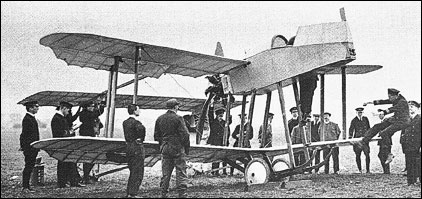 |
Blackburn A.D. Scout1915 |  |
| ANTI-AIRSHIP FIGHTER | Virtual Aircraft Museum / United Kingdom / Blackburn |
 |
Harris Booth Air Department of the Admiralty (or A.D.) designed this distinctly odd anti-airship fighter for naval use. Although of conventional wood and fabric construction, unlike what was becoming standard practice, the fuselage nacelle was attached to the top wing rather than the bottom. This gave the pilot/gunner an excellent all-round view but contributed nothing to stability. The Scout (unofficially called the Sparrow) was intended to carry a Davis two-pounder recoilless gun, but wiser heads prevailed, figuring that, recoilless or not, the structure wasn't up to such a weapon. An ordinary Lewis gun was fitted instead. The ability of a single man to fly the aircraft, load, fire and reload these heavy guns was always doubtful. When RNAS pilots got their hands on the Scout they found it was overweight with extremely poor handling. The Admiralty accepted it, but got rid of it as unsatisfactory within a month. FACTS AND FIGURES © The extremely narrow undercarriage included a skid which may not have done much ro stop the Scout tipping forward. © Not only was the fuselage attached to the upper wing, but that wing was smaller than the lower wing - contrary to the arrangement found on most biplanes. © The tailplane was attached by four very slender tailbooms. The tailplane itself was enormous, as large as the upper wing. © The tailbooms were horizontally spaced nearly 3.4m apart. The skids at the ends of the booms helped the Sparrow stay upright.
|  COMPANY PROFILE | ||||||||||||||||||||||||||||||||
 |

|
